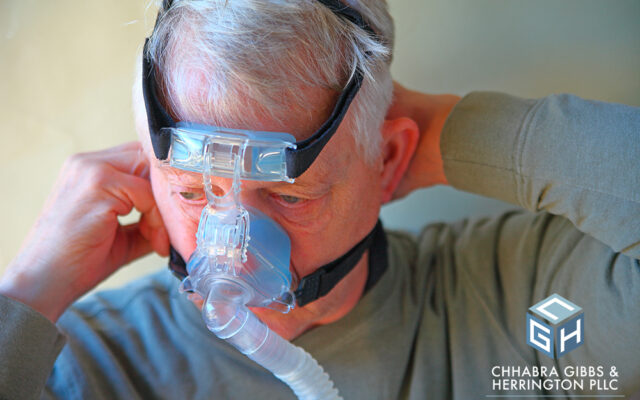
We are frequently asked what the difference is between a mass tort and a class action.
What is a Mass Tort?
Unlike a class action, mass torts generally occur when a company causes injury or damage to numerous individuals through a defective product or a singular event such as an explosion at a factory. A company might make a prescription drug or a medical device that causes physical injuries or economic harm to thousands of individuals all over the United States.
While the product may be the same – a prescription drug, for example – the injuries to consumers might vary drastically. For some, the defective drug might cause minimal injury while other people may die from taking the drug. The strength of the case may depend on a person’s medical history or how often they ingested the drug.
Thus, in a mass tort, each injured person brings her own case. If the injured person wins, she wins for herself only and no one else. Same if she loses. And if an injured person does not file a complaint, she will not get any money for her injuries.
What is a Class Action?
In a class action, a single individual, known as a class representative, can represent thousands of consumers, known as a class. The class representative represents the interests of these members, many of whom won’t have a lawyer and are not named in the litigation.
Because the class representative represents thousands of people, the court oversees the case more closely than an individual case. Before a case is truly a class action, the court makes sure certain requirements are met.
- A class of people must actually exist, meaning at least 40 or more people must have been harmed the same way the class representative was. This requirement is called numerosity.
- The facts of the case must be common to the class representative and the members. This requirement is called commonality.
- The claims of the class representative must be typical of the class. This requirement is called typicality.
- The class representative and his or her lawyers must demonstrate that they are capable of pursuing the case. This requirement is called adequacy.
- And, in most class actions, the class representative and counsel must show that the common issues in the case predominate over any individual issues.
Once a court finds that the case should proceed as a class action, the court will order that notice be provided to the class. The notice will inform the class members of their rights to stay in the class or opt out of the class. If a class member stays in the class, she will be bound by the court and jury rulings made in the class action. If she opts out of the class, she is free to pursue her own case. However, she will not receive any monies from the class case.
Class actions are favored when the damages to any one person are minimal. For example, let’s say a company decides to charge its customers $1 more than it’s allowed to. And let’s say the company has 1 million customers. The company will make a million dollars more than it should have. But a customer is unlikely to bring an individual lawsuit over $1.
But that same customer can bring a class action lawsuit and represent the 1 million customers who were overcharged. In a small damage case, a class action is often the only way a company can be held accountable.
What is Multidistrict Litigation (an MDL)?
When multiple lawsuits are filed in numerous federal courts by individuals who have sustained similar injuries or harm by a company’s conduct, the cases may be transferred to a single federal court to coordinate pre-trial proceedings. When cases are grouped together in one court, we call it a multidistrict litigation or MDL for short.
In the MDL, the court will coordinate everything that goes on before a trial. The judge overseeing the litigation appoints a select group of attorneys to pursue the case on behalf of all individuals who have filed suit. This group of attorneys is often referred to as the “plaintiffs steering committee” (the PSC) or “plaintiffs executive committee.”
An MDL may take years to resolve, and the law firms appointed by the judge routinely expend thousands of hours of time trying to prove the case for the plaintiffs.
Many times, the law firms handling the MDL will be able to work out a potential settlement for all individuals who were injured or damaged by the company, especially after there have been a few bellwether jury trials to help both sides determine the reasonable value of the cases.
No individual is required to participate in the settlement. Instead, a settlement is structured such that each individual’s case facts are evaluated on its own merits, including exposure, causation, injuries, and damages. Each individual is able to make his/her own decision after hearing the terms of the proposed settlement.
If the law firms participating in the MDL cannot work out a settlement, eventually all of the plaintiffs will be transferred back to their original courts to try their cases. The trial will be the responsibility of the law firm the individual hired to represent him/her.
Even if the MDL does not settle, the benefit of the MDL is that each law firm and client will be able to use the evidence that was gathered during the MDL process.
What Types of Mass Tort & Class Action Cases are Represented?
Mass torts and class action cases are often, but not limited to:
- Pharmaceutical companies designing or manufacturing harmful drugs
- Manufacturers producing defective products
- Environmental exposure, including fracking and water contamination
- For class actions, unlawful conduct that results in a small amount of damage to a large number of people.
Contact Chhabra Gibbs & Herrington PLLC today if you or your loved one need assistance in a Mass Tort or Class Action Lawsuit.
Free Case Evaluation
Contacting the firm is free. We understand that the disputes facing you and your family can seem daunting.



